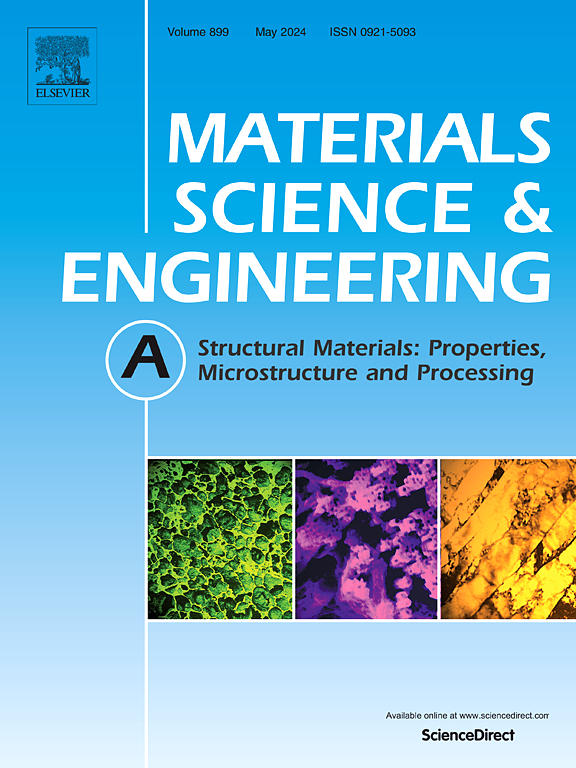Tracking phase-level properties in heat-treated high-chromium cast irons using mechanical microscopy
IF 6.1
2区 材料科学
Q1 MATERIALS SCIENCE, MULTIDISCIPLINARY
引用次数: 0
Abstract
Determining individual microstructural components in multicomponent and multiscale materials can be a challenging task. High chromium cast irons (HCCI), particularly in heat-treated states, exhibit complex microstructures that include austenite or martensite on a meso-scale, as well as hard and micro-sized eutectic carbides, and secondary carbides on a sub-micron or nanometric length scale. Assessing the mechanical properties and quantities of these phases requires small scale characterization over relatively large areas.
In the current work, the mechanical properties of each individual constitutive phase were determined by using high-speed nanoindentation maps as a function of four different heat treatments. An area of 400 × 300 μm containing 30 000 indentations on each sample was analysed. Statistical deconvolution and machine-learning clustering methods were used to determine the hardness and elastic modulus of the different microstructural components. The results illustrate how the microstructure and mechanical properties of the various phases evolve through heat treatment, supporting the notion that secondary carbides reinforce and strength the HCCI matrix, rather than acting as an individual component.
用机械显微镜跟踪热处理高铬铸铁的相级性能
在多组分和多尺度材料中确定单个微结构成分可能是一项具有挑战性的任务。高铬铸铁(HCCI),特别是在热处理状态下,表现出复杂的显微组织,包括中尺度的奥氏体或马氏体,以及硬的和微尺寸的共晶碳化物,以及亚微米或纳米尺度的次生碳化物。评估这些相的力学性能和数量需要在相对较大的区域内进行小规模表征。在目前的工作中,通过使用高速纳米压痕图作为四种不同热处理的函数来确定每个本构相的力学性能。在400 × 300 μm的样品上分析了30,000个压痕。采用统计反褶积和机器学习聚类方法确定不同显微组织构件的硬度和弹性模量。结果表明,不同相的显微组织和力学性能在热处理过程中是如何演变的,支持了次生碳化物增强和强化HCCI基体的观点,而不是作为单独的成分。
本文章由计算机程序翻译,如有差异,请以英文原文为准。
求助全文
约1分钟内获得全文
求助全文
来源期刊

Materials Science and Engineering: A
工程技术-材料科学:综合
CiteScore
11.50
自引率
15.60%
发文量
1811
审稿时长
31 days
期刊介绍:
Materials Science and Engineering A provides an international medium for the publication of theoretical and experimental studies related to the load-bearing capacity of materials as influenced by their basic properties, processing history, microstructure and operating environment. Appropriate submissions to Materials Science and Engineering A should include scientific and/or engineering factors which affect the microstructure - strength relationships of materials and report the changes to mechanical behavior.
 求助内容:
求助内容: 应助结果提醒方式:
应助结果提醒方式:


